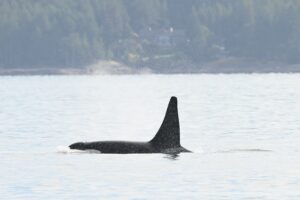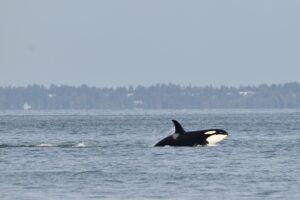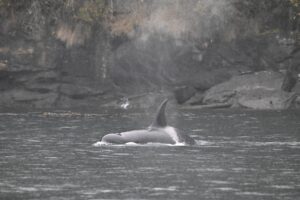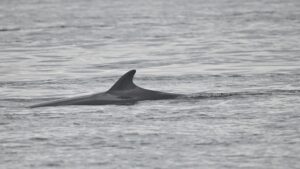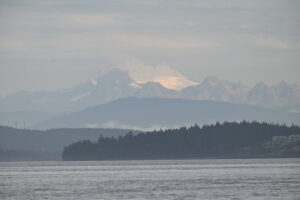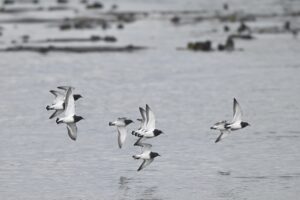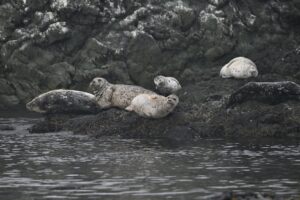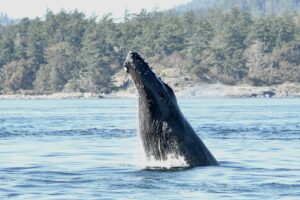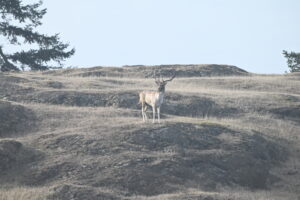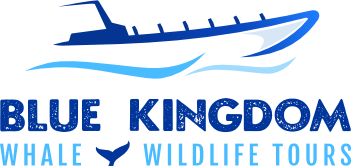Another week of whales and wildlife has flown right on by and the beginning of October has delivered some fun wildlife gems along the way. It’s also safe to say we have definitively crossed into autumn territory as it’s been CHILLY on the water. But, some extra layers to bundle in, some hand warmers, and a good beanie to keep your head warm go a long way while we continue to adventure out into the central Salish Sea.
As our season is winding down (with everyone back to work and school), we have been getting out on the water far less, averaging about 5-7 trips a week depending on bookings and the weather. But when we have gotten out, we have had some amazing encounters.
In fact, guests aboard both Sounder and Wake on the 8th were able to visit with a very special and rare group of killer whales for our area–members from A Pod of the Northern Resident community! Things had to align just perfectly for an encounter like this to work out. For one, Northern Residents mostly range from southeastern Alaska down to roughly the Campbell River area (a little further than halfway up inside of Vancouver Island in BC). A couple matrilines have been venturing down further south to the Sunshine Coast and Howe Sound area off west Vancouver over the last few years, staging around the Fraser, but their trips are usually short before they make their trek back north. For these whales to have decided to come even further south (along the south end of Galiano Island) was incredible–this put them at the northwestern-most point of our range from our docks in Anacortes. The serendipidy was real! And what a sight they were. There were lots of social behaviors happening–spy hops, tail slaps, chin slaps and a couple breaches. The whales (A42s with A94 and the A25s = 11 total) were spread into smaller social groups with A61 “Surge,” a mature adult bull, splitting off to start doing a bit of his own wandering. Surge has a tall, sturdy, unique dorsal fin that sets him apart and that also left our guests in awe–I’m pretty sure he just expanded his fan club by two dozen individuals ;). And A103 “Albion,” a twelve-year-old female whale, seemed more out of the water than in it, with all the tails, pecs, and body parts she was throwing around. We won’t be forgetting this absolute treasure of an encounter anytime soon!
Bigg’s killer whale individuals spotted on this week’s tours were some males who are “roaming,” meaning they have left their natal group and often do much of their own exploring, solo. That is not to say that these males don’t find ways to enjoy their own company, as we saw on a couple different occasions for ourselves, or are “outcasted” by any means; Bigg’s killer whale society is highly fluid and every single orca in this population is unique. T49C and T65A5 are no exception. T65A5 “Indy” hung around on a couple rainy tours with us. He was rolling in kelp beds, spy hopping, and coming up beneath groups of birds on the water–potentially just because it’s fun to scare them off. He’s a goofy little whale at just 11 years old, and he’s been off doing “Indy things” since he dispersed at age 5! He’s one of our favorite whales to talk about because of all his jaunts, the trouble he finds himself in sometimes, and then just his general, happy-to-be-alive demeanor when we do catch up to him. “Indy,” short for Independent, is a name this Bigg’s killer whale really lives up to!
We have also continued to see humpbacks–and many out near the Race Rocks Ecological Preserve area! Several individuals were so riled up lunge feeding, chin slapping, and breaching out of the water that we could not get photos of some of the key features needed to properly ID these whales. But–we love humpback action, so this is not a complaint! Humpbacks that were identified on our tours this week include: BCX1876 “Zillion” and BCX2463 (no nickname). This is not a complete list of all humpbacks seen, just the ones we could manage the proper photos to help with identification!
Minke whales are another little filter-feeding whale that have begun pushing into a couple new areas as they get the last of their bait fish fill before departing for lower latitudes. We had one not too far from our docks out in Rosario Strait near Bird Rocks, and she just kept circling and feeding right in the quickly moving tideline. They are not the easiest whale to track, but this one gave us some great looks as she fed.
Included are some photos from these encounters and with only two weeks left in our season we are excited to see just how things wrap up for our 2025 season! Who will we see between now and then? Who will be the last whale we spot, *officially*, until next spring? Only time will tell.
